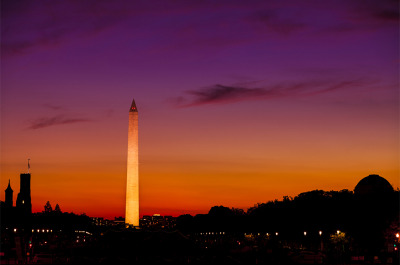How did you buy your holiday gifts this year? Did you put on your running shoes, sprint to the mall and try to grab that last big-screen TV on sale at your favorite electronics store? Or did you sit in your recliner in your robe, laptop at the ready, and click your way through the gift list, and finish shopping in 15 minutes? Maybe you even shopped on your mobile phone while waiting in line at the post office to mail some presents.
To say that the retail industry is undergoing drastic change is an understatement.
Technology is the most obvious force driving change in retail. Technological innovations are changing behaviors and ingraining in shoppers’ minds a one-click, two-click expectation. Shoppers want choice, convenience and price, and they want it now. These changes have stressed the retail industry as it struggles to innovate. These forces are also partly responsible for the high turnover of retail CEOs in 2014.
There’s another force at work. For decades, the retail industry has been adapting to a discount mentality that — combined with the widening income gap — has created a bifurcated marketplace. Everyone wants a bargain, and retailers have had to be creative to meet that demand. Ever since the rise of Walmart in the early ’60s, low-price shopping has been the norm, affecting every aspect of retail. Even first-tier department stores have adapted, competing at both ends of the spectrum — offering high-end merchandise at their original stores and discounted products at outlet stores, some of which have even moved into urban areas alongside their pricier cousins.
Before the Internet came along, Walmart changed the game
The low-price mentality took hold in this country about 50 years ago with the rise of Walmart and other discount retailers. Sam Walton opened his first Walmart in 1962 in Rogers, Ark., and currently, there are more than 11,000 stores in 27 countries. Walmart, Costco and other discount retailers that compete on price by selling items at close to breakeven levels have created a business model that fundamentally changed the way shoppers behave. Shoppers across the board have been conditioned to expect high-quality products at bargain prices.
Look around, and you can’t help but notice it everywhere you shop. I see it, for example, every time I walk past a Gap store in downtown San Francisco. Not a day goes by that there isn’t a sale: 30 percent, 20 percent, friends-and-family, you name it. As a shopper, I probably won’t even go in if there isn’t a sale. I am guessing there are a lot of shoppers like me.
And that can be a downside for retailers. The expectation of a sale often keeps people from purchasing items at the regular price.
The Internet has only intensified the discount mentality
Shoppers will go online and price-check for the best deal. So brick-and-mortar stores have to be able to compete by offering better service, advice from salespeople and the ability for shoppers to try on clothes or actually handle the items they are buying. Even with more services to offer, stores have to be able to adjust according to e-commerce patterns, maybe offering some of the same deals people can find online.
And who can blame them? It is basic human nature to want the best deal. The Waltons and the Internet may have changed our buying habits, but the impulse to save money is probably as old as money itself.
Discounts create a sense of urgency, and buyers are reluctant to shop around for other deals if they worry that the coveted set of golf clubs is on sale “today only.”
High-end retailers adapt, serving customers shopping “high and low”
High-end department stores, meanwhile, have recognized that their customers are “shopping high and low, full-price and off-price,” according to an article in SFGate.com. A handful of innovative high-end retailers are meeting their customers’ needs by giving them the opportunity to shop high and low in the same locale by bringing their outlets to the cities.
Traditionally, outlet malls have been located in suburbs where rents are cheap and construction costs are low. But now, urban is the theme of the day. Millennials are flocking to the cities, and upscale brands’ off-price outlets are right behind.
For example, San Francisco’s Union Square, the city’s retail center, now features off-price outlets Saks Off 5th, Nordstrom Rack and Nieman Marcus Last Call — all just blocks away from their full-line stores.
These retailers are taking advantage of shoppers’ behavioral shifts and betting that today’s value-driven consumers will indeed “shop high and low” and that putting their off-price concept within a few blocks of their full-price concept will “see no cannibalization of department store sales.”
Discount shopping is here to stay. Retailers have shown an amazing ability to adapt. As technology continues to evolve, they will likely face even more challenges. The key for them is to be flexible and to pay attention to shifting tastes and behaviors, maybe even preparing for the incomparable potential of mobile commerce. After all, as David Tisch, co-founder of new mobile marketplace Spring, says, “It’s the future of retail.”
Anjee continues to be an insatiable collector of all things retail. She’s a student of culture living next door to future shoppers, whose fleeting trends constantly change the retail landscape … driving retailers, landlords and developers crazy!

 Anjee Solanki
Anjee Solanki

 Colliers Insights Team
Colliers Insights Team
